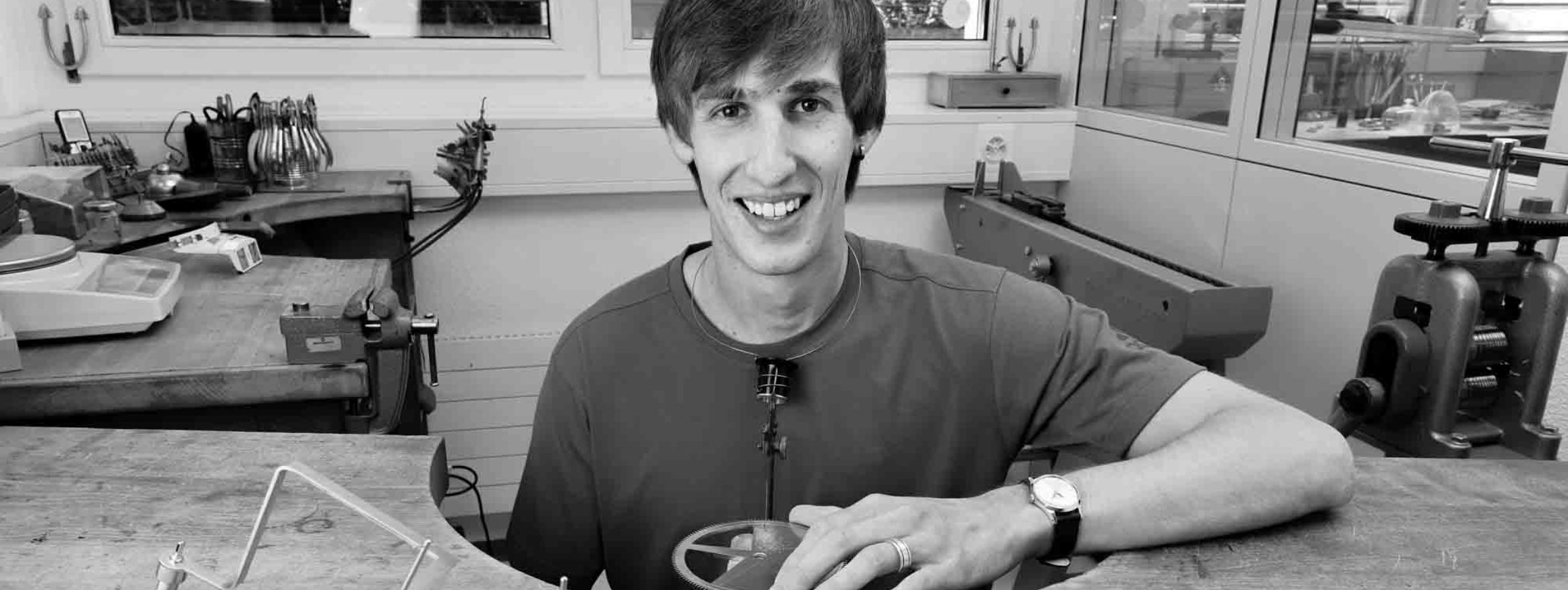News • 28 May 2021
Mario Scarpatetti Wins F.P. Journe Young Talent Competition 2021
Congratulations Mario Scarpatetti. It gives us great pleasure in announcing that Mr Scarpatetti and his Secular Perpetual Calendar (Kalender Perpeten) have won the F.P. Journe Young Talent Competition 2021. Mr Scarpatetti follows in the footsteps of Rémy Cools, Théo Auffret, Tyler Davies and Norifumi Seki – past winners of the Young Talent Competition. Below, Mr Scarpatetti shares his thoughts on his inspirations and the steps involved in manufacturing his award winning clock.
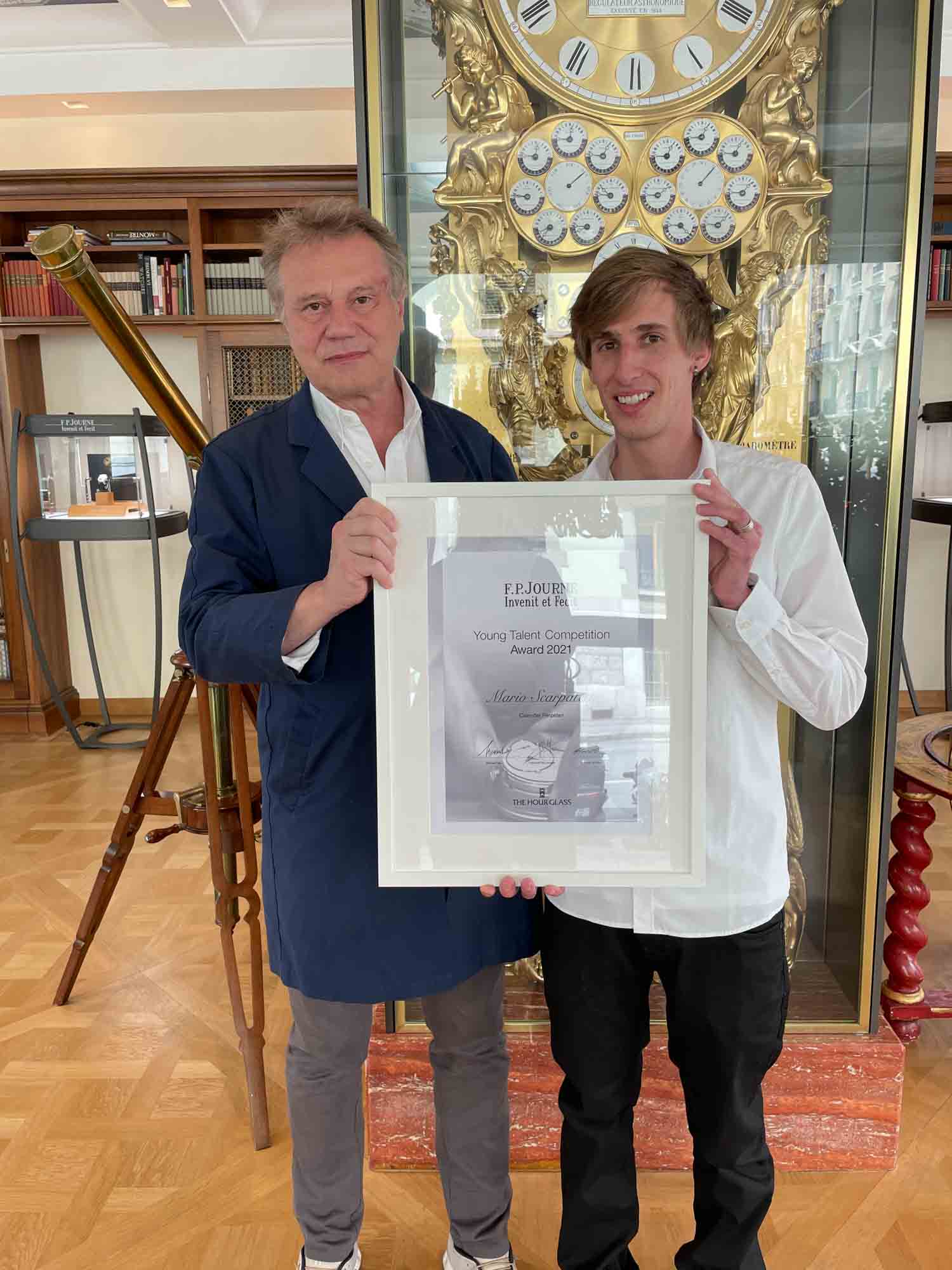
Our Involvement in the F.P. Journe Young Talent Competition
Thanks to social media, independent watchmaking has reached a new audience. Despite the stratospheric demand some independent watchmakers are facing, the profession is fraught with personal and professional sacrifices.
Access to equipment and machinery remain a prohibitive factor for young watchmakers; furnishing a workshop requires a financial outlay in the tens of thousands of dollars. Our involvement in the F.P. Journe Young Talent Competition seeks to draw attention to their accomplishments and to alleviate the financial burden – allowing each watchmaker to focus on creation. Each year the winner is presented to the international press and is awarded a CHF 20,000 cheque from The Hour Glass and F.P. Journe to purchase watchmaking tools or finance his/her horological project.
Organised with support from Fondation de la Haute Horlogerie (FHH) the competition is part of a concerted effort to perpetuate and support the art of haute horology and the appreciation of horological craftsmanship.

What Inspired the Kalender Perpeten?
“The idea for this clock with secular perpetual calendar came up in winter 2016, with a moon ball for the moon phase, and a time equation, wanting the clock movement to have a very long power reserve. The heart of the movement is the perpetual calendar, which automatically corrects even the uneven secular years. Controlled by a wheel that turns once every 400 years, the date needs no correction.”
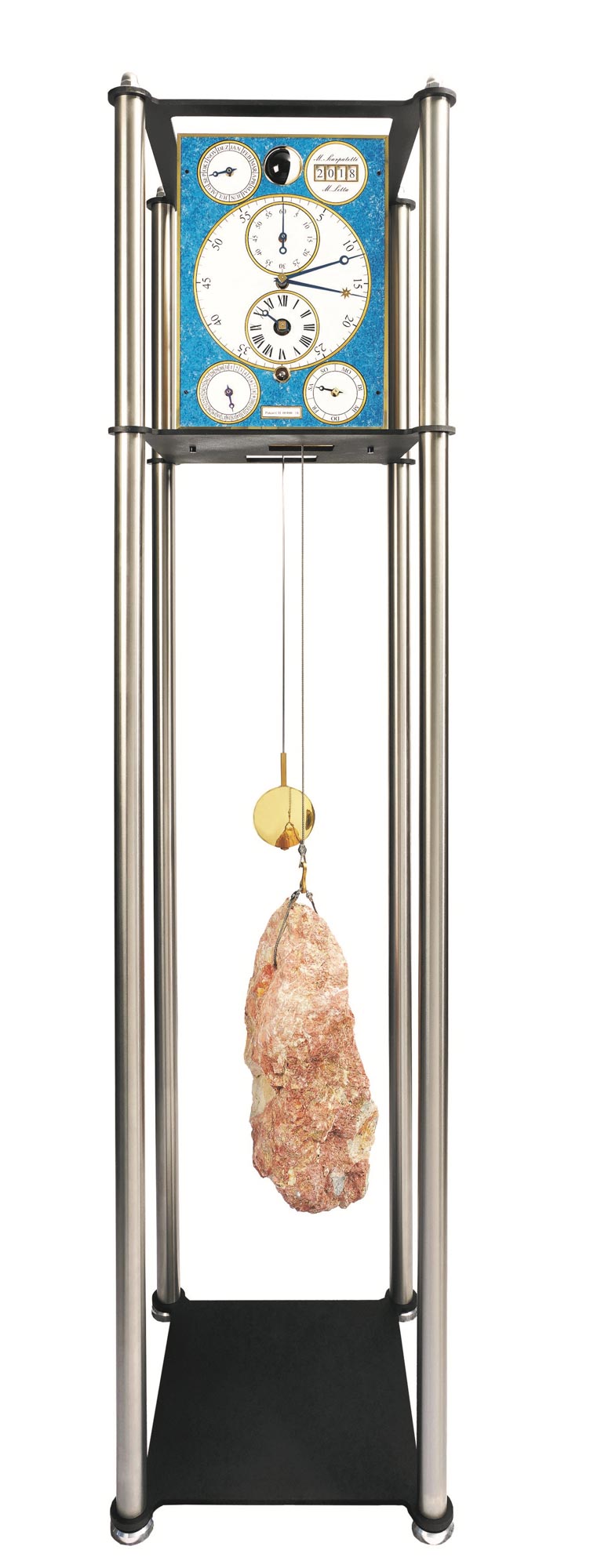
The Invention of Mario Scarpatetti’s Kalender Perpeten
In 2013, I made a clock with classic perpetual calendar with a 4-year wheel but something bothered me. The mechanics may be leap years recognize between centuries, but not whether a century or millennium is a leap year or not. I started to think about a mechanism that could recognize whether a century or a millennium has a February 29th or not. In 2013, during a train ride, the solution came to me. My idea is to supplement the mechanics of a well-known perpetual calendar with an additional wheel that turns once every 400 years. The greatest achievement is the ease with which this 400-year wheel is switched.
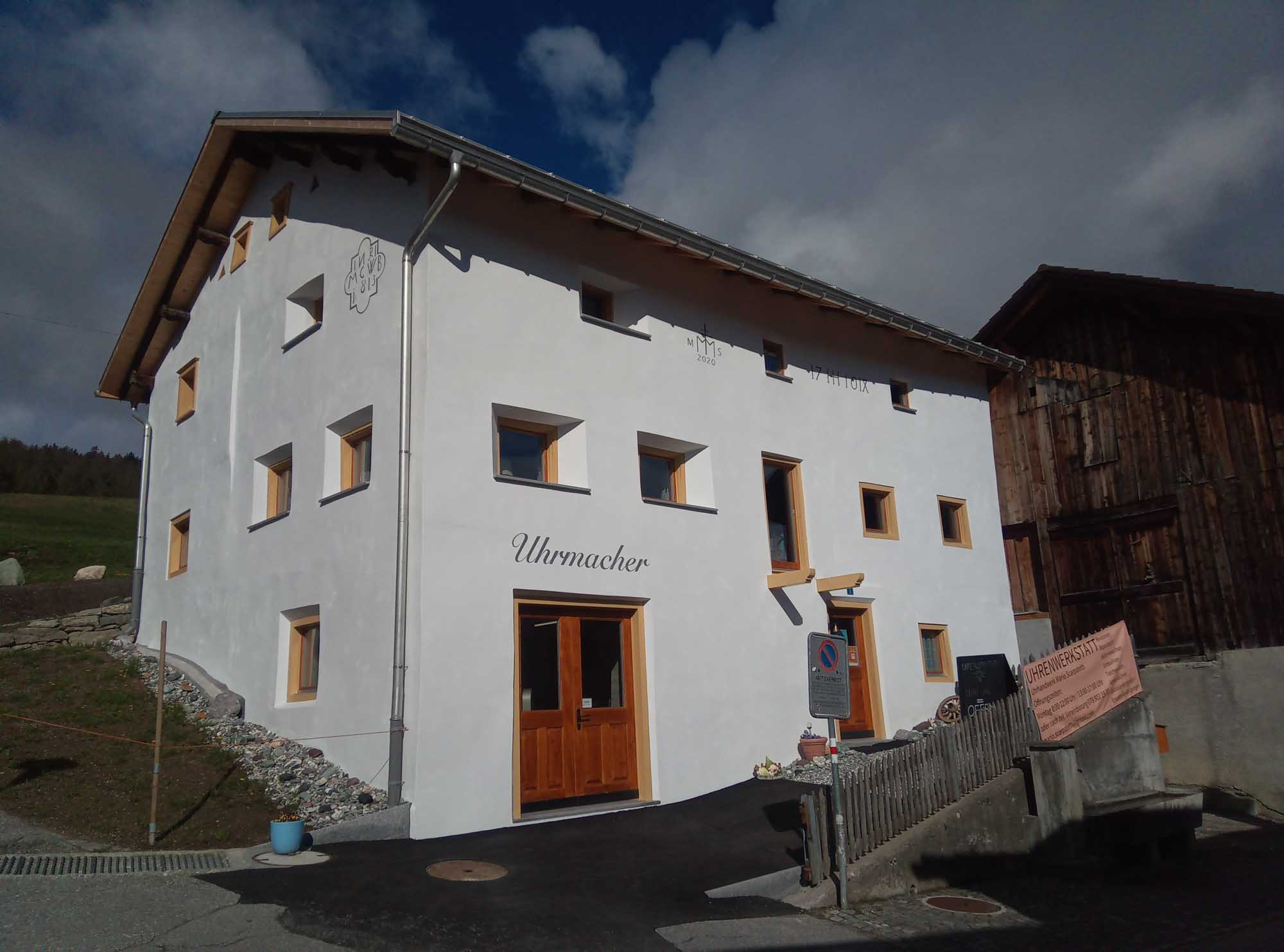
Shortly afterwards, I was asked whether I would make a movement for the drive of a planetarium and I put my sketches in pending. In 2016, I finally found the time to design a clock with my own perpetual calendar. I started milling the first wheels in 2016 and the construction of the large movement lasted until summer 2018. During the production, in March 2018, I applied for a patent for my invention by the Swiss Federal Institute of Intellectual Property relating to a 400-year wheel and its indexing. My 400-year wheel received in 2018 the patent N° CH 00400/18.

Manufacturing of the Movement Components
All parts of the movement, with the exception of four ball-bearings (Kugellager), were traditionally handmade. Most of the parts were made from brass and steel sheets, as well as brass and steel round bars. For the manufacturing of the movement, I’ve made all parts without NC and CNC-controlled machines. The movement can be dismantled into 478 individual parts. It consists of a total of 570 components”.
Measurements
- Mechanism: Height: 48 cm – Width: 48 cm Total clock height: 203 cm Total clock weight: 50 kg.
- Movement: Height 42 cm Dial: Height 41 cm Weight: 21 kg, Sassalbo stone from Poschiavo.
Indications
- Months – moon phases – years / hours – minutes – seconds – equation of time / date – day.

Explained in Detail
“All components, such as the rocker switch (Schaltwippe), are exactly the same as in a known perpetual calendar with a 4-year wheel. The 4-year wheel is the first on my calendar that looks different. All 4 deepenings for February have the same depth. The 4-year wheel therefore does not decide whether February has 28 or 29 days. A shift finger (Schaltfinger) is pressed into the front of the 4-year wheel. This finger thus makes one turn every 4 years and switches the 400-year wheel further. The whole thing also works with two shift fingers, as I described in my patent application.

The 400-year wheel had to be manufactured slightly differently. The wheel is switched twice every 4 years, but not regularly every two years. The placement takes place a few months before a leap year (e.g. between April 2019 and January 2020). The next placement takes place after February of a leap year (e.g. between April 2020 and January 2021). The 400-year wheel then remains in the same position for about 3 years. Only then does the next switching take place (in our example between April 2023 and January 2024). The switching is very energy-saving over several months. The shift finger grips in the outer gearing of the 400-year wheel (a fine gearing with 200-teeth). A pawl also grips in the same gearing for positioning.
The inner scope of the wheel has 97 elevations. The nose of the rocker switch of the perpetual calendar feels the 400-year wheel every February. If the nose falls into a gap, the clock switches from February 28 th to March 1st. If the nose rests on one of the 97 elevations, the mechanics switches from February 28 th to February 29 th and then to March 1st the following night.

It gets interesting now at a century or a millennium. In the case of the gear wheel, there is a very large gap at the point where a step would be for three consecutive centuries. At this point, instead of two gaps, the gear wheel has only one gap in the width of three divisions next to a step. Only in the fourth century is there an elevation where the nose feels the century. Namely for those centuries which are a leap year. That is why the 400-year wheel has 97 and not 100 steps inside”.
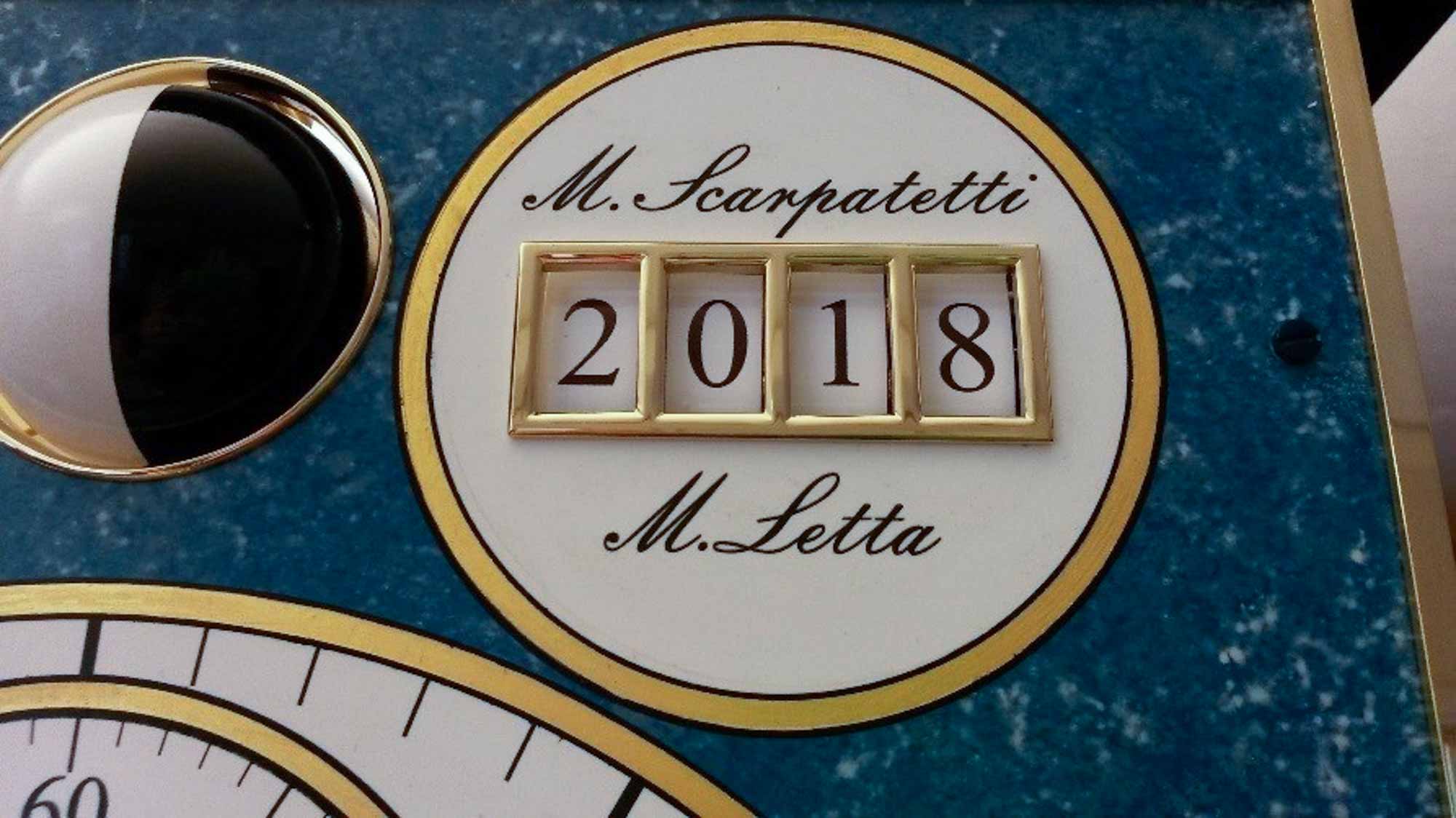
Additional Notes
- In February 2021, the nose of the rocker switch falls into a gap. The clock switches from February 28, 2021 to March 1, 2021.
- In February 2024, the nose of the rocker switch is on one elevation. The clock switches from February 28, 2024 to February 29, 2024.
- In February 2100, the nose of the rocker switch falls in the middle of a wide gap. The clock switches from February 28, 2100 to March 1, 2100.
- In February 2400, the nose of the rocker switch is on one stage. The clock switches from February 28, 2400 to February 29, 2400.
- The Gregorian calendar is based on a cycle of 400 years, after one turn of my wheel the game starts all over again, just like with the Gregorian calendar. The owner of the clock never needs to adjust the date.



